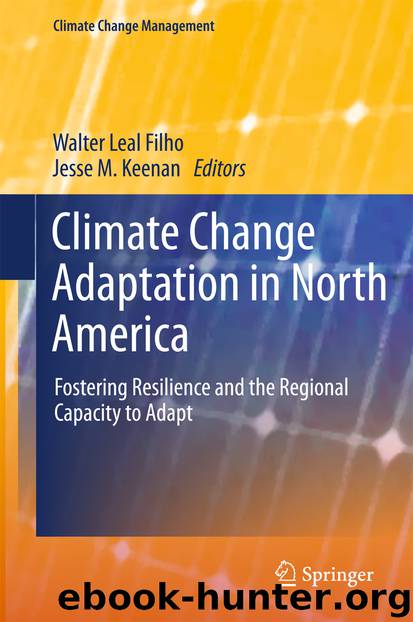Climate Change Adaptation in North America by Walter Leal Filho & Jesse M. Keenan

Author:Walter Leal Filho & Jesse M. Keenan
Language: eng
Format: epub
Publisher: Springer International Publishing, Cham
Case 1
White’s competition entry titled “Small Means and Great Ends”2 was announced the winning design solution of the FAR ROC design competition among 117 submissions from over twenty countries. In a public event on October 23rd 2013, roughly one year after Superstorm Sandy made landfall in the Rockaways, the design proposal was presented on site to the community of Far Rockaway and the media.
Social Sustainability
The starting point and main goal of the design proposal “Small Means and Great Ends” was to create an authentic urban development that is a new home for the community of Arverne East. The design proposal argued the necessity for any sustainable urban development to be authentic, robust and socially sustainable as base requirements. The proposed urban strategy creates an inclusive community that will enable all members to flourish. After Hurricane Sandy, the strong sense of community in the Far Rockaways was witnessed growing even stronger and more tight-knit in the face of disaster. The proposal takes that sense of community to another level by providing space for the community to hold a central role in everyday life.
The proposal establishes an inclusive community with a strong identity through an urban design that affords members of the community opportunities to engage, grow and prosper. It creates an integrated solution that positions the community to provide leadership throughout the project’s development, during everyday life, and in the event of a storm and its recovery afterward.
Public place forms the most essential element in urban design. The design proposal is therefore organized around a series of public spaces, being the social nodes of the development embedded in a recognizable continuation of the surrounding grid layout. As the colorful community of Arverne East comprises a wide diversity of individuals, the design establishes a network of varying public spaces of differing scales. The proposed public places vary from a protected nature preserve, landscaped parks, community gardens, a town square, to a wetland park filled with program for children. At the center of the development a new town square, in addition to being a main attraction for visitors, offers the community a new identity. Shared courtyards are proposed within the building blocks providing a safe, controlled outdoor space for communal use and social interaction.
In addition to a diversity in public space, the urban plan includes a mixture of housing types and public and commercial functions and services that provide equal opportunities for business entrepreneurship and engage residents in decision-making processes that directly affect their lives. The variety of housing types caters to the community; property types were designed to give ownership to young individuals, couples, families, and older generations alike.
In line with the vision to place the community in a central role, the proposal includes possible means to ensure and maintain affordability and continuous funding of community initiatives, such as a community land trust [CLT], on site revenue and business opportunities for community members. The proposal aims to extend the definition of sustainability into land development and ownership that will strengthen local resilience through community participation and a true sense of ownership, accountability and belonging.
Download
This site does not store any files on its server. We only index and link to content provided by other sites. Please contact the content providers to delete copyright contents if any and email us, we'll remove relevant links or contents immediately.
The Meaning of the Library by unknow(2385)
Six Billion Shoppers by Porter Erisman(2225)
Why Nations Fail: The Origins of Power, Prosperity, and Poverty by Daron Acemoglu & James Robinson(2172)
No Time to Say Goodbye(1997)
Red Notice by Bill Browder(1924)
The Economist [T6, 22 Thg9 2017] by The Economist(1843)
Currency Trading For Dummies by Brian Dolan(1788)
Thank You for Being Late by Thomas L. Friedman(1678)
Bitcoin: The Ultimate Guide to the World of Bitcoin, Bitcoin Mining, Bitcoin Investing, Blockchain Technology, Cryptocurrency (2nd Edition) by Ikuya Takashima(1613)
Amazon FBA: Amazon FBA Blackbook: Everything You Need To Know to Start Your Amazon Business Empire (Amazon Empire, FBA Mastery) by John Fisher(1495)
Coffee: From Bean to Barista by Robert W. Thurston(1419)
The Future Is Asian by Parag Khanna(1401)
The Great Economists by Linda Yueh(1389)
Capitalism Without Capital: The Rise of the Intangible Economy by Jonathan Haskel(1339)
Pocket World in Figures 2018 by The Economist(1327)
How Money Got Free: Bitcoin and the Fight for the Future of Finance by Brian Patrick Eha(1322)
Grave New World by Stephen D. King(1315)
The Sex Business by Economist(1279)
Cultural Intelligence by David C. Thomas(1201)
